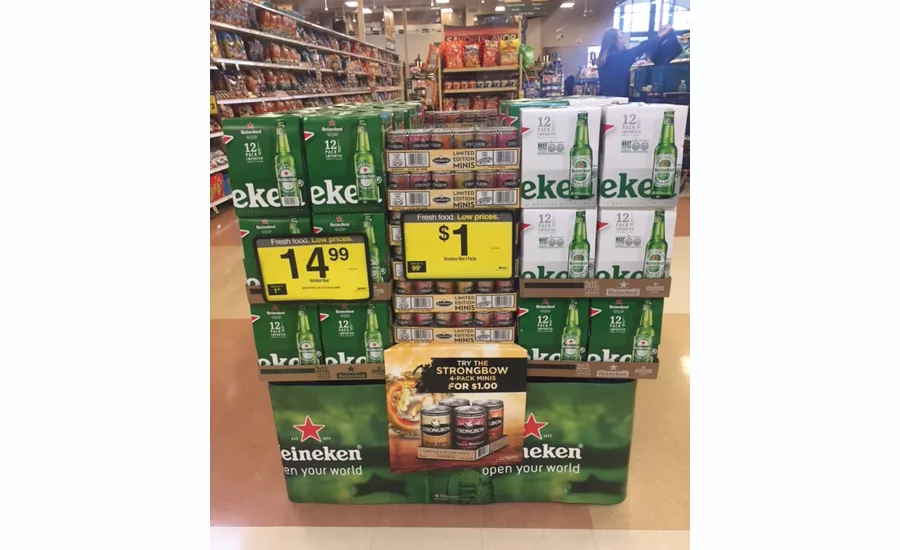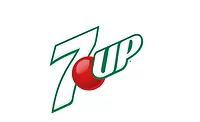Category management, merchandising position products for success
End cap displays, shopper insights drive sales

Although more than half of consumers have purchased milk, juice and/or carbonated soft drinks in the past 30 days, sales were stagnant during 2014-2015 with top categories struggling to grab consumer attention, according to Chicago-based Mintel’s June 2016 “Beverage Packaging Trends” report. Yet, experts note that product positioning; bold, colorful merchandising displays; and packaging innovation can drive sales of alcohol and non-alcohol beverages in-store.
“Six in 10 respondents indicate paying attention to packaging format, and nearly the same amount pay attention to label design, indicating that the package is more than simply the thing that holds what’s inside,” the report states. “… Conveying a sense of quality and freshness will drive purchase, the strongest indicators in quality point to chilled, glass, re-sealable and clear containers, all of which also contribute to freshness.”
When looking at non-alcohol beverage launches from 2012 to 2016, Mintel’s Global New Product Database indicates that 30 percent of launches in the 2016 measurement period featured new packaging, which compares to less than a quarter of launches tracked in the 2012 period, the report adds.
In addition to packaging innovations, experts note that retail-ready product displays, including cardboard displays, pallets and endcaps, can grab consumer interest and lead to more retail purchases.
“The current merchandising trend for beverages is to get large built-out displays at [the] entrance to [the] store,” says Brian Sudano, managing partner at New York-based Beverage Marketing Corporation (BMC). “These include multiple brands surrounded by products/categories that interact with each other. Price discounts are not as deep as before, offering better return on space for the retailer and greater impulse purchase incidence.”
Strategically located endcaps, the core of many retailer promotional programs, also remain valuable real estate, Sudano adds.
“Permanent display placement/racks are a premium investment, but can be hard to procure,” he says. “Trends have driven a premium for displays and access to the health-and-wellness aisle. Single-serve packages on racks are a premium versus full-case displays. Offering package sizes to satisfy different occasions and increase margin is growing in importance and availability.
“A good way to merchandise is to be near adjacent categories or aisles in which target consumers shop,” Sudano continues. “For example, if the target consumer is young mothers, a display at the end of the diaper aisle is powerful. Identifying basket mix and understanding basket purchases is important for ensuring proper placement.”
Within the past few years, category management has become more sophisticated, according to the Wimberley, Texas-based Category Management Association’s (CMA) website. The association’s redesigned category management process, CatMan 2.0, is a holistic, comprehensive approach that now encompasses data, analytics, process and success models, as well as the game-changing influence of the digital revolution, it notes.
“CatMan 2.0 is a comprehensive process, the purpose of which is to help produce a category plan that will optimize the shopping experience as well as optimizing business results for the manufacturer and the retailer,” CMA’s Senior Vice President of Category Management Best Practice Gordon Wade said in a statement.
CatMan 2.0 also integrates shopper insights and shopper marketing into the category management process, it adds.
Technological advancements are having a major impact on HEINEKEN USA’s category management operations, says Vikas Satyal, senior director of category development at the White Plains, N.Y.-based company.
“All technologies involving the shopper path-to-purchase are having an impact on category management,” Satyal says. “This includes social media, [customer relationship management] (CRM), and loyalty card technologies launched by suppliers and retailers.
“For example, we’ve launched programs for Heineken where a shopper receives an invitation for a holiday party with a coupon for a 24-pack,” he continues. “The shopper downloads the coupon, which includes an image of the display to look for in-store. In-store, the shopper finds the exact same package and display.”
Virtual reality (VR) technologies and the tracking of shopper purchase behavior through VR tools as well as shop-a-longs are further impacting HEINEKEN USA’s global category management and merchandising strategies, he adds.
“We are constantly having to stay proactive in this area as shopper behavior can change quickly, especially by the influx of new and emerging beer segments, brands and pack types,” Satyal says.
Pricing strategies also can play a pivotal role in growing shopper traffic and category volume, he adds.
“With feature pricing, the best examples are the ones that drive the greatest segment and brand reach,” Satyal explains. “An advertisement that features both Mexican imports and European imports may be advantageous for a retailer to generate trial and to meet multiple consumer needs.”
As retailers and brands compete for dollar share, brands should continuously measure and assess pricing strategies and the effectiveness of their merchandising opportunities in concert with the retailer’s ability to maintain digital relevance and visibility, experts note.
“Measuring volume life and return-on-investment of various merchandising approaches will provide understanding of the greatest impact of approach,” BMC’s Sudano says. “However, it needs to be done over several time periods to ensure that the approach continues to prove the return needed.” BI
Looking for a reprint of this article?
From high-res PDFs to custom plaques, order your copy today!




